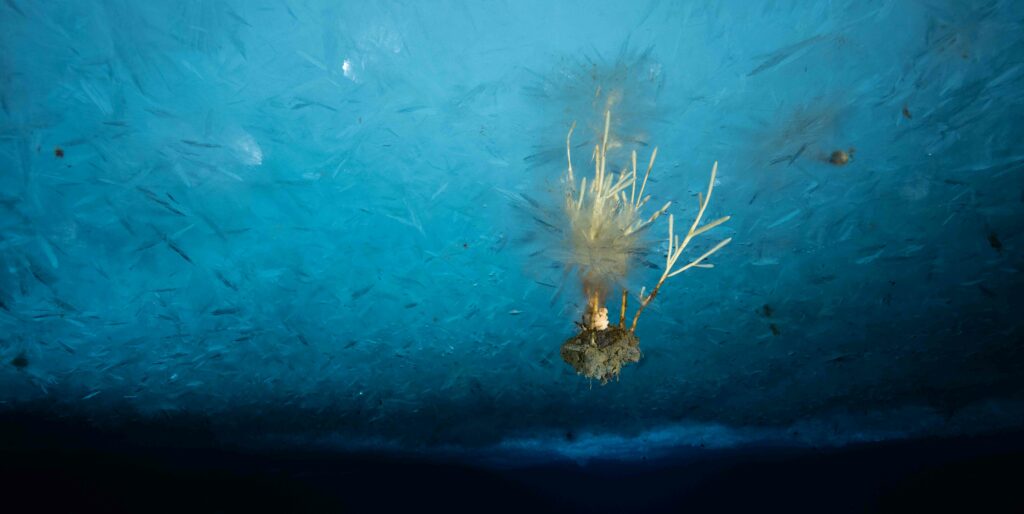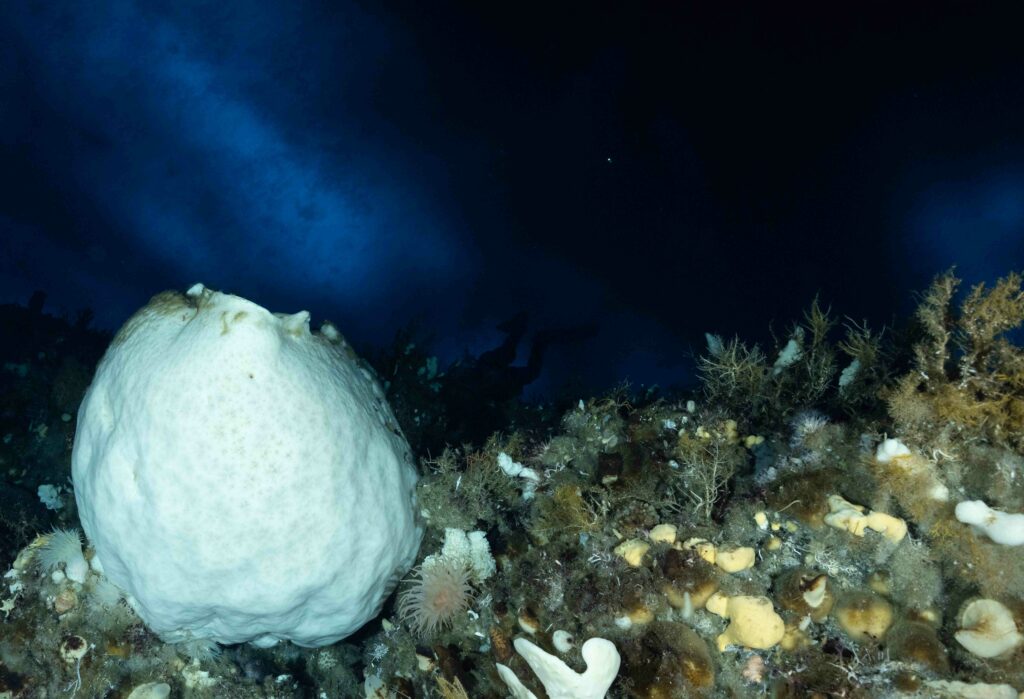Anchor ice, as Rowan explained in her post, is really pretty and the ocean freezing in front of us. It is also a great disturbance that leads to the seafloor ecosystem being pretty different than many places. The depth of sea ice formation is anywhere from around 10m (30ft) to in pretty cold years, 20m (60ft). This year it is down to around 54 ft. The reason why this impacts the community is that as the ice forms, it grows on anything that it can and especially sponges.

The sponge community here is very dynamic with sponges that live hundereds to maybe thousands of years. And others… particularly one Homaxinella balfourensis that grow quickly but are also grazed upon and removed. Above is an images of a field of Homax (as I call them) but covered in anchor ice that is slowly acting like a baloon to pull them up to the surface ice.

In the deeper areas, the long lived sponges dwell. We have studied these in the past and know that they grow to the size of a baseball in ~10 years or so but they reach huge sizes and have age estimates in the centuries not decades.



